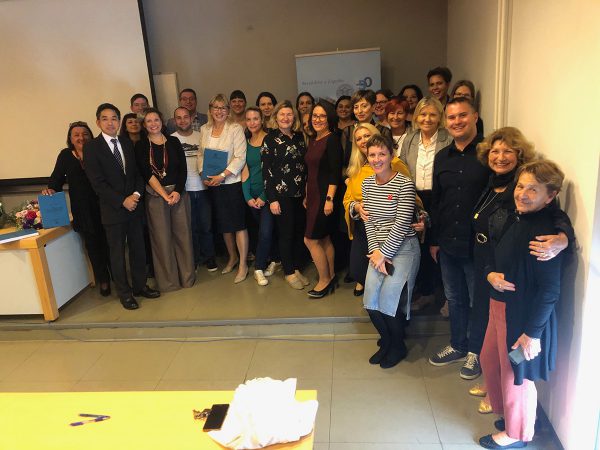Title: Environmental Friendly Multifunctional Textiles
Project funding: Croatian Ministry of Science, Education and Sports
Type: Bilateral project CRO-SRB 2008-2010
Coordinator: Professor Ana Marija Grancarić, PhD
![]()
Project Summary:
The project follows the tasks of national projects related to surface modification of textiles in particular in the field of synergistic action of two or more components to obtain hydrophilic or hydrophobic textiles and textiles with high resistance to weather, microorganisms, UV radiation, fire and other. In the segment for the preparation of textile dyeing and printing unconventional compounds were applied in scouring and additives in mercerization and cationization of cotton. In these modifications nanoparticles of silver and other metals in minerals such as zeolite, will be implemented to achieve antimicrobial properties, but at the same UV protection and resistance to fire. Indicators of the effectiveness of these processes will be the degree of waste water pollution especially in cases of synergism. Partner in Leskovac conducts finishing of modified cotton by plant extracts and purifying wastewater after pretreatment procedures and processing of textiles mentioned in this project, unconventional and low-cost natural adsorbents. The reason is that adsorption can withstand a fairly high-speed flow and produce high quality effluent without the presence of harmful substances. Known and new developed methods for water purification use activated carbon, which is very expensive material. Therefore, in wastewater treatment commercially available cheap materials, including various types of ash wood, natural clay, activated sludge, nanoparticles of silica, zeolite, are used. The emphasis advantage of these materials is their high selectivity, high capacity and durability. All these materials are available as waste material from city heating plant, as well as power plants, which can be used in wastewater treatment. Adsorbents would be determined by the following parameters: grain size distribution, specific surface of adsorbent, porosity, mean pore cross-section, real and apparent density, and chemical structure. Will be used Langmuir’s, Freundlich and Redlich-the-Petersen’s isotherm to describe the equilibrium between liquid and solid phases, the kinetics, etc. Two mechanisms for diffusion within the particles and the speed of adsorption are included: (a) diffusion inside the volume pores, known as pore diffusion, and (b) diffusion along the surface of pores, known as surface diffusion. the water will be purified in selectively – in steps. With the determination of surfactants and other textile auxiliaries in the water it is possible to return water after such selective purification back into the process of finishing and dyeing.
 |
| Cationized cotton fabrics finished with water exstracts od Cantarion St. John’s Wart and Hibiscus |
Key words:Cotton, cellulose fabric finishing, ash water purification
![]()

